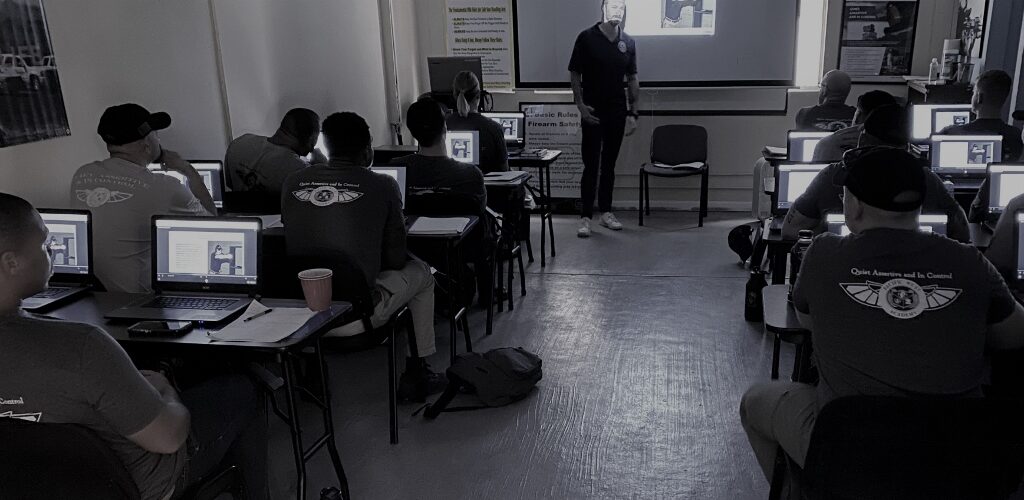

Deadly Force in Executive Protection
Deadly Force in Executive Protection
With violent crime on the rise across the US, many affluent and/or high-profile individuals are turning to private security for their protection. This role is often filled by Close Protection (CP) or Executive Protection (EP) Agents. Executive Protection agents are, usually, highly trained individuals whose main objective is to facilitate the safe movement of their client(S) in both personal and professional aspects of their lives. Taking on the responsibility of protecting someone can come with a risk most security professionals are aware of. Violent encounters that may involve serious injury or death are part of the day-to-day reality of this role. Individuals accepting this role, and the immense responsibility that accompanies it, should not only be tactically and technically proficient in the use of deadly force, but also in the legal and moral technicalities that are involved. Above all else, every agent should be adept in ways to avoid potentially dangerous situations all together.
Prevention and Avoidance
When accepting an EP role, the agent should first begin with developing a thorough understanding of the situation in which they may become involved. This understanding generally begins with planning. An agent must first develop a threat assessment that involves risks associated specifically to the client(s) as well as to the environment in which they will be operating. Understanding the client’s background, including their personal and professional lives in conjunction with any possible threats that they have or may potentially face is important foundational information. When this information is applied in context with specific risks associated with the environment in which they will be working, an agent can begin to formulate a plan on how to limit their client(s) exposure to these perceived threats, ideally by avoidance altogether.
Along with developing a threat assessment, on-site advances of working locations can help with contingency planning and facilitating the movement of the client(s) within the environment while minimizing the client’s exposure to risks. Also, conducting on-site advances and being familiar with your working environment can help you to evacuate your client(s) when potentially hazardous situations arise. Let’s be honest, thorough planning won’t allow you to fully predict unforeseen hazards that may arise therefore a clear and concise evacuation plan is crucial.
De-escalation
Strong Presentation. When working in a dynamic and high exposure environment it is important for an agent to be portrayed not only as courteous and professional, but also as someone who is in control both mentally and physically. If an agent is viewed as “weak” or as a “soft target”, someone with nefarious intent may be more likely to carry out their plans. The way an agent is viewed by a potential attacker can oftentimes be the first level of mitigation or de-escalation.
Verbal Commands. If an agent finds his or herself in a position facing a potentially hostile individual and they have no means or ability to safely evacuate their client(s), verbal commands are often the next step in controlling a situation. When given the opportunity, an agent must give clear and concise verbal commands to the perceived threat in an attempt to de-escalate or to at least take control of a situation before it turns hazardous.
Physical Touch. Physical contact and control techniques can tentatively be a security professional’s last step in keeping control of a volatile situation before it becomes deadly. Every EP agent should consistently study and train in systems that involve making space, striking, grappling and control techniques. If an agent is trained properly and is confident in his or her abilities, a strong combatives base can be used as a de-escalatory or mitigation technique that can often provide the space needed to evacuate the client or also to control an individual from creating a potentially catastrophic scenario for you, your client(S), and any bystanders present at the scene.
Less than Lethal
Tasers, stun guns, pepper spray and other less than lethal means of self-defense are often legal to carry and are often available and used by EP agents in the field. These types of items can be especially useful for several reasons:
- Legality- Often, state and local laws will hinder or prohibit an individual from being able to carry lethal weapons, but less than lethal tools are often allowed.
- Distance- These tools can often be used from a distance and can allow an agent to thwart or hinder a would-be attacker just long enough to escape the situation.
- Minimize damage- If used safely and correctly, these tools can be great alternatives to other options that may cause collateral damage to both hostile individuals and innocent bystanders alike.
Deadly Force
Every professional working in the security industry should understand that deadly force should only be used as a last resort. This idea carries with it both moral and legal aspects to consider. Just because you are within your right to use deadly force against another human being, you should always understand that taking a human life can impact each individual differently. Although most professionals accept the fact that they may need to end someone’s life in the undertaking of their duties, most people don’t actually know how they would react mentally and emotionally after the fact. The psychology of inflicting harm to others or taking a life in the line of duty is complex and can impact several aspects of the individual’s life.
Studies conducted by the National Institute of Mental Health have shown a direct correlation between police officers and military members who were forced to kill or cause serious bodily harm to another person and PTSD symptoms, depression symptoms and social adjustment disorders.
Legal guidelines outlining when a person is allowed to use lethal force either in self defense or in the defense of others can vary greatly depending on what area the agent is working. It is important that every professional be well read and educated on the legal guidelines involving the use of deadly force that are specific to the area in which they will be working. For instance, in California you not only have the right to defend yourself from imminent danger, but also the right to protect others. However, in order for the defendant’s defense to be successful, you must establish:
- You reasonably believed that yourself or the other person was in imminent danger;
- You reasonably believed the use of force was necessary to prevent harm and;
- You only used the amount of force necessary to prevent harm.
Deadly force may be justified if you are reasonably fearful of rape, murder, robbery, mayhem, or any attack that would cause great bodily injury. (Section 505 of California’s Criminal Jury Instruction)
These area specific legal guidelines and instructions can vary depending on location and it is important to understand that even though a defendant is found to have acted in good legal standing, they may still be exposed to civil litigation and investigations that can leave them financially exposed and/or temporarily unable to work under their previously held professional licenses or certifications.
Although individuals may find themselves in situations where they are immediately left with no other option than to use deadly force, it is important to make the attempt to exhaust all other means when able to do so. It is every security professional’s responsibility to train, research and be knowledgeable in different ways to avoid or address potentially hazardous situations before they become lethal, and also to thoroughly understand the laws and regulations in their areas of operation.
Executive Protection Agents should undertake extensive training that include, among many other things, avoidance and prevention measures, de-escalation techniques and mitigation tools in conjunction with being proficient in the use of deadly force. In-depth EP training, which covers multiple facets of the dynamic environment of professional protection, is available at Pacific West Academy.
